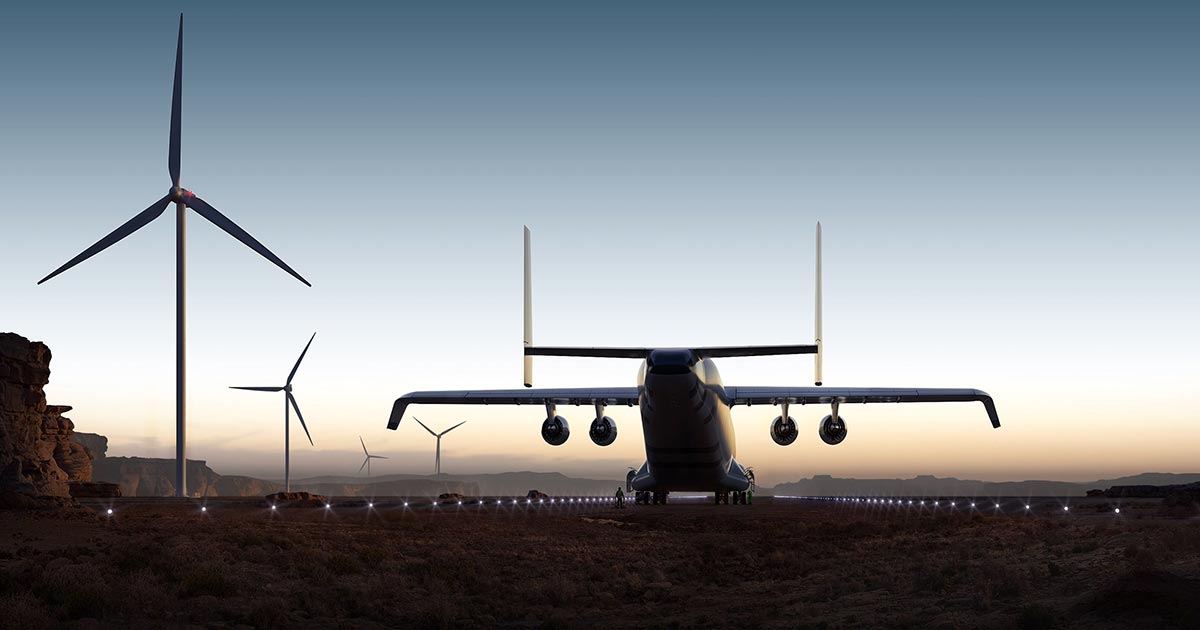Check out this behemoth.

 radia.com
radia.com
It's a "point design" with one clearly stated purpose: to transport wind turbine blades wherever needed.
Has about 7x the enclosed volume of an Antonov 124.
This one ambitious.
Won't it be cheaper to design WT blades to be assembled from 2 or 3 sections in the field?
The only problem this aircraft is meant to solve is delivering long (>100m) WT blades to remote sites.
If trucking is such a problem, then use the solution that's already in use for cranes: split-em in two.
I thought of this immediately as I looked at the marketing photo that shows such a crane in the background.

WindRunner | Radia
Delivering the largest, most efficient wind turbines directly to the wind farm.
It's a "point design" with one clearly stated purpose: to transport wind turbine blades wherever needed.
Has about 7x the enclosed volume of an Antonov 124.
This one ambitious.
Won't it be cheaper to design WT blades to be assembled from 2 or 3 sections in the field?
The only problem this aircraft is meant to solve is delivering long (>100m) WT blades to remote sites.
If trucking is such a problem, then use the solution that's already in use for cranes: split-em in two.
I thought of this immediately as I looked at the marketing photo that shows such a crane in the background.
